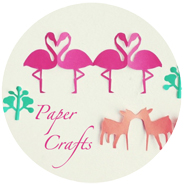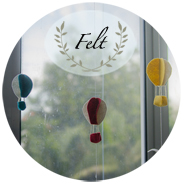Just wrapped up one of the most important modules for Early Childhood Education; Learning through Play. Its been real hard work but I never had so much fun doing any project, extremely tedious but strangely therapeutic.
My team’s final product : 3 learning playstations for the theme Food for K1 childre
1) Maths Corner with the pizza activity.
Objective :
– Learn numeration, counting, matching
– literacy skills by recognising the words of the various pizza toppings.
 Extension : Socio Dramatic play can be encouraged by throwing in some plates, cutlery and toy cashier machine.
Extension : Socio Dramatic play can be encouraged by throwing in some plates, cutlery and toy cashier machine. 
i) Textures of different types of Bread
Objectives :
– Literacy objective : Learn the names of the different types of bread
– Explore some texture words for bread; soft, hard, rough and flaky
– Match the shapes of the bread with the texture

ii) Smell and match the Spices activity
Objectives :
– Explore the sense of smell by smelling 10 different types of asian spices
– hand eye coordination to match the correct spices with the numbers
– literacy skills encouraged through learning of the names of the different spices and the scents
– Learn about the types of food that use these spices


Objectives :
-Encourage socio-dramatic play and engage in literacy acts
– Counting and sorting of ‘pretend food’
– Practise fine motor skills while fishing and barbecue-ing
 We had a fishing pond complete with fishes and prawns, fishing rods attached with magnets and pails for collecting the catch.
We had a fishing pond complete with fishes and prawns, fishing rods attached with magnets and pails for collecting the catch.
 A child sized barbecue pit with trays of pretend food, all labelled to achieve literacy objectives.
A child sized barbecue pit with trays of pretend food, all labelled to achieve literacy objectives.  Kudos to my team member Pam, who painstakingly created the ‘wire mesh’ of the barbecue grill by gluing together rolls of aluminium foil.
Kudos to my team member Pam, who painstakingly created the ‘wire mesh’ of the barbecue grill by gluing together rolls of aluminium foil. I can’t ask for a better team, we had great team dynamics and I must say we are a group of fairly creative and inventive people. Thanks Phebe, Pam and Tan Tin for a job well done!
I can’t ask for a better team, we had great team dynamics and I must say we are a group of fairly creative and inventive people. Thanks Phebe, Pam and Tan Tin for a job well done!

Another dramatic area of an airplane for the theme of transportation.

Another team even went to the extend of bringing their pet dog, hamster and goldfish for the theme on animals. However, the content of their play activities was not anything new that felt that I could learn from.

Some other teams chose to go with the route of ‘if you are not so sure how to score points with the content, confuse with the elaborate backdrops and games.’
I really hope to see more of this sort of effort put into actual preschool classrooms, not too confident that they are many teachers who will make that effort for their children in their class. Well, I am certain to have learning through play activities as a key philosophy for my school (if ever, I do open a kindy or enrichment centre in the future). Only teachers with passion for their jobs and want kids to play will need to apply.




















The stations are so vibrant and nice. But I can’t stop but wonder about the ‘strategy’ of some: confuse with packaging to cover the ‘lack’ of content.
When a child is excited with all the colors and activities and are engaged in them excitedly. At the end of the day, what is the key takeaway? what is the ‘enduring understanding’.
Me still trying to grapple with this too.
thanks so much for sharing.
so fun!! where are the stations?? LOVE the bbq station!! can make one and send to taiwan pls… (along w the pizza..)
(along w the pizza..)
Kole – I think for any play activity, parents or teachers need to determine the learning objective. What may seem like just play to adults, could possibily have some learnings for the child.
In order to advocate alot of play in a preschool setting, teachers need to be able to support these activities with key take-outs.
Most parents are still quite cynical about play in preschools and I will have to fault the teachers who do not do a good job in communicating these objectives to them.
Mich – Hopefully I will be able to implement these play activities in my own curriculum in the future (that is, if I set up a school).
Not able to commit to producing another set of the stations to send to you unfortunately At this time, I am buried under the avalanche of new commitments
At this time, I am buried under the avalanche of new commitments 
hi rachel, I too strongly believe that a child learns through ‘play’.
I too strongly believe that a child learns through ‘play’.
I m definitely not a cynic of learn through play
I am not trained in early childhood education hence I am totally unfamilar with the schema of things. you are right that the tr do not communicate the objectives enough to the parents but I don’t ‘blame’ them as it is quite impossible to do so on a daily or weekly basis.
What i do wonder about teaching real understanding of things, concepts. etc. for eg: my kid’s sch did a theme on space. she can rattle of names and such. she can ‘regurgitae’ facts, what she learnt and related activities she had done but when i talked to her and qn her. I don’t sense real understanding. I don’t see the big idea that she has learnt from sch.
take another eg. a theme on apples.
tr bring apples to class. kids see, touch, taste apples. tr use apples to teach maths. tr use apples to make apple sauce/pie/juice. tr bring kids to orchard to see apples. tr teach growth of plants using apple as an eg. tr intro list of words related to apple. tr tells a stories centering around apples.
I see alot of such thematic based lessons in schools.
my qn is: what is the key takeaway for the child in one statement?
hope you don’t mind my qns, as you are the expert here. hope to seek some clarity on these issues as I am quite clueless on early chilhood and sometimes i feel that what i do for my kid is not constructive and not helping her at all.
thanks so much in advance and feel free to delete this post if its inappropriate.
The Theme based curriculum stems from a cognitive development theory that children will obtain the most effective learning, if certain new elements of experience are incorporated into existing structures of thought.
In an ideal scenario, themes that are used have to be relevant to the children’s culture or experience. Then from there integrate literacy, social studies, math, music and art learning objectives. However we have most teachers going with ready to use curriculum, they often neglect the issue of relevance.
It is also the easiest curriculum type to implement to support teacher-directed activities, whereby children are given little independence and are expected to learn by fulfilling certain adult expectations.
This objective goes in line with the traditional focus in primary school education. Teachers and curriculum planners still prefer introduce this method which they believe will prepare the child for a smoother transition into primary education.
In order for the child to obtain a more concrete understanding into the topics, an inquiry base curriculum need to be adopted. For example; High Scope – where children are actively involved in the activities which they plan, carry out and reflect on. Or the project approach where in-depth investigation of a specific topic with the main goals of the child can find out more about the topic rather than to seek answers to questions proposed by the teacher.
I believe these other methods will be more effective in nurturing a creative child.
Maybe you can consider introducing these other methods yourself to supplement Rae’s learning in school?
I hope this is able to clarify some of the doubts you might have.
thanks rachel for the very clear explanation.
you touched on a pt about relevancy
I have heard alot about inquiry based learning but still exploring application for rae. its more than self-discovery right?
thanks alot for your sharing.
your blog has been most insightful.
Kole – The Project approach is a child-directed investigation into the topics of her interest. It is also a great way to introduce more science and nature study for the child. Usually involves field trips or ‘planting’ something in the child’s enviroment to elicit the child’s interest to find out more about the subject.
Method usually not preferred for most local preschools, since it involves alot of gathering, finding of materials and organisation of field trips for the teachers. Also quite a bit of uncertainty since children can ask any question about the topic, and teacher is suppose to work together with them to find the answers. In order words, children can take the responsibility for their own learning.
Check out these websites for ideas and tips on how to implement the approach.
http://rec.ohiorc.org/projects/project_approach.aspx?section=project
http://www.projectapproach.org/
Will really love to hear about your experience, if you plan to use this method with Rae.